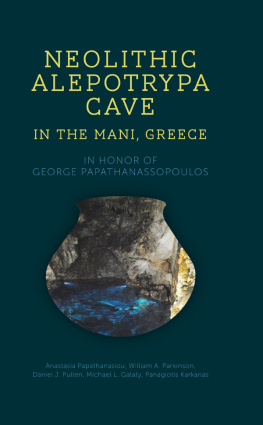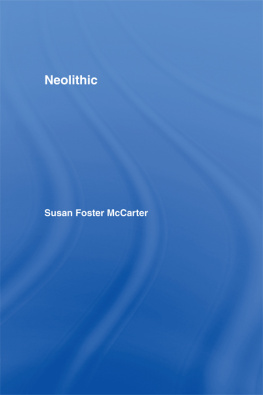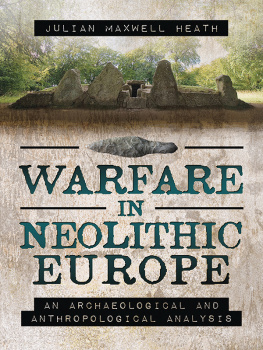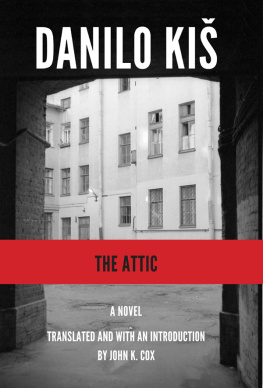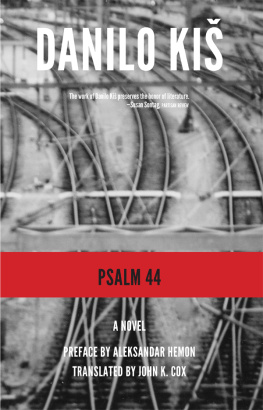
Published by
Oxbow Books, Oxford, UK
Oxbow Books and Omer Rak, 2011
ISBN 978-1-84217-977-2
PDF ISBN: 9781842175781
EPUB ISBN: 9781842175767
PRC ISBN: 9781842175774
Front cover image: Ceramic ritual vessel a rhyton with decorations in the
form of double spirals on the handle. Middle Neolithic, Danilo Culture, Smili.
Archaeological Museum in Zadar, Croatia. Photo by: Branislav Grgurovi.
Back cover image: Danilo Field near ibenik, Dalmatia, Croatia. Photo by: eljko Krnevi
This book is available direct from:
Oxbow Books, Oxford, UK
(Phone: 01865-241249; Fax: 01865-794449)
and
The David Brown Book Company
PO Box 511, Oakville, CT 06779, USA
(Phone: 860-945-9329; Fax: 860-945-9468)
or from our website
www.oxbowbooks.com
A CIP record for this book is available from the British Library
Library of Congress Cataloging-in-Publication Data
Rak, Omer.
The rhyton from Danilo : structure and symbolism of a middle Neolithic cult-vessel / Omer Rak
; translated by Theresa Alt and Wayles Browne.
p. cm.
Includes bibliographical references and index.
ISBN 978-1-84217-977-2
1. Danilo culture--Croatia--Dalmatia. 2. Pottery, Prehistoric--Croatia--Dalmatia. 3. Excavations
(Archaeology)--Croatia--Dalmatia. 4. Dalmatia (Croatia)--Antiquities. I. Alt, Theresa F. II. Browne,
Wayles. III. Title.
GN776.2.D3R35 2011
939.8--dc22
2010050962
Printed and bound in Great Britain by
Short Run Press, Exeter
ACKNOWLEDGEMENTS
This book would never have seen the light of day had not various individuals and institutions participated in its preparation, colleagues and friends who shared my goal of publishing it, for which I am infinitely grateful to them all.
I met with superb collaboration from the Director of the Archaeological Museum of Istria in Pula, Darko Komo, as well as from the Curator of the Prehistoric Section of the Archaeological Museum in Zadar, Natalija ondi, both of whom most generously permitted photographs to be made of the remains of the rhyta from the site Kargadur and from one of the richest sites of the Danilo Culture, the one in Smili near Zadar. I was pleasantly surprised by the readiness of the Regional Museum in Niki, Montenegro, especially curator Zvezdana Vuovi-Lui, to make and send me photographs of the rhyton found in the significant Crvena Stijena Cave site, as well as by her cheerful spirit that enlivened our every contact. I am deeply in debt to Dr. Paolo Biagi, the renowned Italian prehistoric archaeologist from the Ca Foscari University, Venice, who suggested the publisher to me, from the very beginning generously sent literature and illustrations indispensable for my work and remained constantly in contact with me. I also owe thanks to Dr. Muzafer Korkuti, who graciously allowed me to use illustrations from his book about the Albanian Neolithic and Chalcolithic.
Photographs of the finds of rhyta from the Greek Neolithic, especially the ones from Corinth, probably would never have appeared on the pages of this book if Sarah James, Assistant Curator, Corinth Excavations from the American School of Classical Studies at Athens had not located them and kindly sent them to me. I owe no less gratitude to her colleagues Carol A. Stein, Acting Director of Publications, and Natalia Vogeikoff-Brogan, Head Archivist, for their thoughtfulness and professionalism.
Both close and productive was our collaboration with the young and promising archaeologist Emil Podrug, curator of the prehistoric collection of the Museum of the City of ibenik, which holds a large part of the finds from the Danilo Cultures eponymous site of Danilo Bitinj, as well as from other Neolithic sites from the nearby area. Our regular exchanges of information, exceptionally fruitful conversations about various aspects of the Neolithic as well as physical contact with Danilo ceramics, which I was allowed for my research, contributed in great measure to the genesis of this book. Words are not enough to thank him for his selfless help.
In addition to the translators Theresa Alt and Wayles Browne, who successfully undertook the difficult job of translating this text, frequently accommodating my numerous requirements and additions, I am indebted to my colleague Mirko Banjeglav without whose help I could not have conceived and designed the illustrations and photographs contained in the book. I would be indeed unjust if at the end of this roll I did not also mention and thank my own family my wife Vesna and daughters Gala and Rea who patiently persevered together with me, encouraging me and offering me support throughout the lengthy work on this book.
PREFACE TO THE ENGLISH EDITION
The so-called rhyton (pl. rhyta) from Danilo, an archaeological site near the coastal town of ibenik in Dalmatia, Croatia, is a four-legged Neolithic vessel made of fired clay that according to the consensus of archaeological opinion was most likely a cult vessel used in rituals of unknown origin and content. Danilo Culture is the eponymous name bestowed on a culture flourishing in the period from about 55004800 BC at Danilo and at some neighbouring sites. This culture had great influence along the eastern Adriatic coast and its hinterland and produced a significant number of these vessels. Rhyta, which other Neolithic cultures also made, were dispersed throughout a vast area of southeast Europe, from Greece to the Alps (6th5th millennium BC). This book is an in-depth study of that mysterious, prehistoric archaeological artifact.
When it was published in Croatia in April 2008 (publisher: Gradska knjinica Juraj igori, ibenik), the book gained wide acclaim amongst prehistoric archaeological experts. Some of the most outstanding among them, such as A. Durman, Z. Brusi and T. Teak-Gregl, welcomed it at book launches, all hailing the important fact that the book is a turning point in the study of Neolithic cult symbolism, especially because it interprets some things that are not usually within the scope of archaeological investigation. It was repeatedly emphasised that the book will be valuable for future investigators of both the rhyton phenomenon and Neolithic cult symbolism. The book, indeed, explores many facets of the Neolithic in general, but the main emphasis is on the role of the rhyton and its structural and symbolic dimensions, which fit perfectly into the frame of Neolithic culture. Thanks to this approach, the rhyton has become a kind of prism reflecting the various aspects of the Neolithic mind. In fact, the entire study represents a complete new methodological approach to the cultural values of the first farming communities in southeastern Europe.
On the basis of the facts elaborated in the book, it is evident that the three parts of the rhyton (handle, receptacle and legs), indicating active and passive principles and the outcome of their union, present the rhytons lively and dynamic interconnected structure as a living, productive metaphor. The fired clay cult vessel is the image of the whole universe with its inner polarised interactive structure existing on all levels, so that the final analysis reveals the rhytons most stunning feature in this holistic picture its androgynous nature. Everything in, on and about the rhyton aims at this point. Due to its antiquity, structure and symbolism, the rhyton was a kind of universal proto-matrix for all relevant mythological and spiritual structures founded on it in the mystical theology of the Mediterranean zone of later, historic times. As such, that cult-vessel was the turning point for the first European integration to have encompassed and connected the various, dispersed Neolithic human groups in a cultural and spiritual unification based on this famous cult vessel. Therefore the present book,





